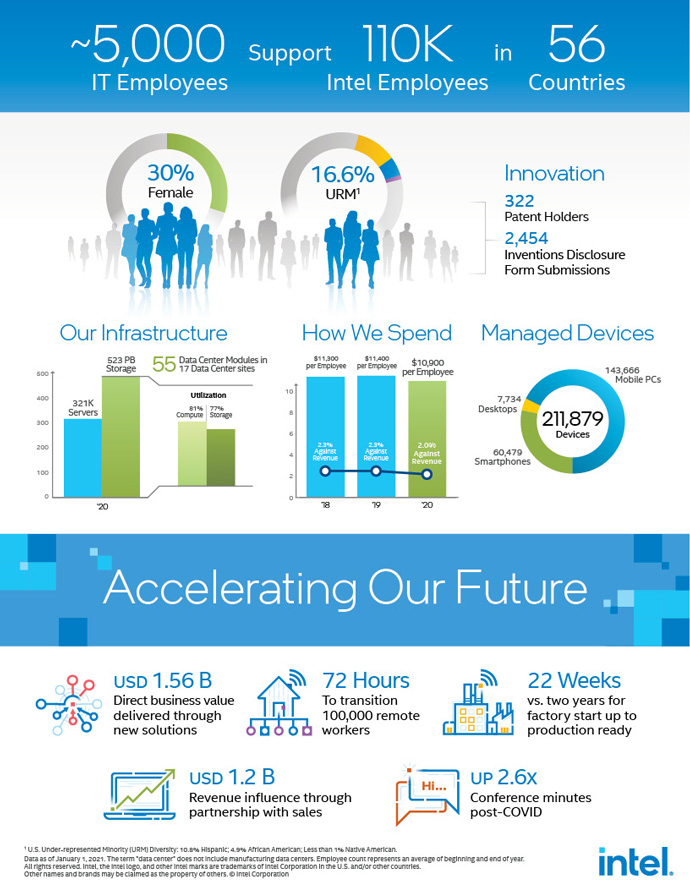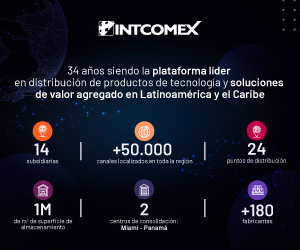The newly released 2020-2021 Intel Information Technology (IT) Annual Performance Report highlights how Intel’s IT team aided the company as it faced the unprecedented challenges of 2020. Amid Intel’s transformation for a new era of distributed intelligence, Intel IT accelerated its efforts to integrate innovative solutions with emerging technologies into Intel’s business. This ensured Intel could continue to manufacture the essential technology solutions that customers were counting on during the COVID-19 pandemic.
“In 2020, we learned the importance of a digital-first business, how to move fast under fire and that the way we work has forever changed. Going forward, we have an opportunity to build a culture that maintains that same sense of urgency and acceleration to deliver greater value for Intel and our customers.”
–Archana Deskus, Intel senior vice president and chief information officer
What Happened: Intel’s IT team played a critical role by ensuring the company’s operations could continue uninterrupted and meet customer demand, while keeping employees safe. The report highlights how it happened, including:
- A 72-hour transition to support 100,000 remote workers.
- Development of a hardware and software platform for technicians to monitor and control critical factory operations from home.
- Deployment of augmented reality technology throughout Intel factories to facilitate social distancing and reduce the need to travel.
- Implementation of automation, remote collaboration and a “One Intel” mindset to reopen a manufacturing facility in 22 weeks — nearly 80% faster than normal.
Why It Mattered: In this era of rapid change, artificial intelligence (AI), 5G network transformation and the intelligent, autonomous edge are the three fastest growing opportunities for Intel and its customers. Intel IT is key in supporting the company’s digital transformation. For example:
- AI algorithms helped improve factory yield by an extra 3.7 million units in 2020. The use of advanced analytics to process billions of data points per day enables engineers to extract information in seconds instead of hours.
- Intelligent test execution management (ITEM) capability helps validation teams run the most efficient and cost-effective tests, resulting in faster time to market. ITEM reduced the number of required tests by 70% and Intel deployed it in 60 validation teams across the company.
- The Sales AI Platform covers 2,500 sellers and 31,000 accounts. In 2020, Sales AI applications generated more than $168 million in revenue for Intel.
What’s Next: In 2020, IT-enabled solutions and services delivered $1.56 billion in business value to Intel. Looking ahead, Intel IT is part of the company’s task force that will shape how Intel operates in 2021 and beyond. A digital-first mindset will enable more flexible, personalized and immersive work environments that support different roles and power new levels of collaboration.






